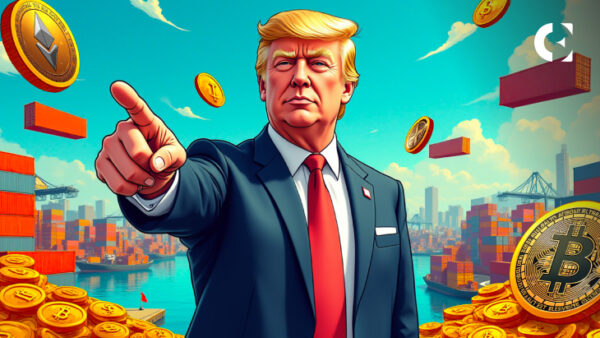- Trump declares April 2 “Liberation Day,” plans sweeping new US tariffs
- Targets include “Dirty 15” nations (China, EU, Canada, Mexico), key sectors
- Analysts warn tariffs risk retaliation, inflation, supply chain issues, market volatility
President Donald Trump reportedly branded April 2nd “Liberation Day,” signaling a major shift in American trade policy effective that date. With characteristic rhetoric and a protectionist stance, Trump plans to roll out sweeping new tariffs aimed at countries perceived as having unfair trade advantages over the United States.
This move, foreshadowed by earlier announcements and rising global trade tensions, could redefine America’s engagement in global commerce. As April 2 approaches, businesses and foreign governments brace for aggressive trade actions ostensibly designed to revive US domestic industries and curb long-standing trade deficits.
What Tariffs Launch on “Liberation Day”?
On April 2, dubbed “Liberation Day” by the administration, Trump is expected to implement broad-based tariff hikes. These will likely affect goods from a targeted group of countries identified as the “Dirty 15” – nations reportedly assessed as having the largest trade imbalances with the US.
Countries like China, Canada, Mexico, and Germany reportedly top this list. The new tariffs could potentially cover a wide range of goods, from electronics to food products. These measures add to already active tariffs on steel, aluminum, and auto imports imposed earlier in March.
Related: Trump’s Tariff Gambit: Will “Liberation Day” for US Trigger Gold Surge & Bitcoin Rebound?
Besides targeting entire nations, the administration will reportedly also focus on key industrial sectors like pharmaceuticals, semiconductors, and lumber. Trump’s trade office has also proposed steep port entry fees specifically on Chinese-built ships, potentially reaching up to $1.5 million per vessel. This aims to curb China’s maritime industry influence and stimulate US shipbuilding.
President Trump has also hinted previously at implementing a universal basic tariff system. Such a system would impose duties on nearly all imported goods, regardless of their origin. If enacted, this would mark a dramatic departure from decades of established US free trade policy.
Retaliation Risks and Economic Fallout Feared
Foreign governments are already preparing to respond. China, for example, has implemented counter-tariffs on some US agricultural products.
The European Union is considering its own retaliatory measures, potentially targeting American goods like whiskey and motorcycles. Canada has introduced tariffs on certain US steel and tech products, while Mexico plans a comprehensive response soon.
Also, the Trump administration recently launched new trade investigations into industries such as copper and lumber. These could result in further tariffs later this year. Analysts broadly warn that these escalating trade actions, while aimed at boosting domestic production, may instead spark higher inflation and disrupt global supply chains.
Trump Remains Firm on Tariff Strategy
Despite some expressed opposition from certain business groups and economic advisors, President Trump remains unwavering on this protectionist path.
Related: China’s Tariff Retaliation Drags Altcoin Prices Down; ETH Eyes $2.2K–$2.5K
For his administration, April 2nd’s “Liberation Day” apparently represents more than just a policy shift – it’s framed internally as a symbolic reclaiming of American industrial strength.
Disclaimer: The information presented in this article is for informational and educational purposes only. The article does not constitute financial advice or advice of any kind. Coin Edition is not responsible for any losses incurred as a result of the utilization of content, products, or services mentioned. Readers are advised to exercise caution before taking any action related to the company.









